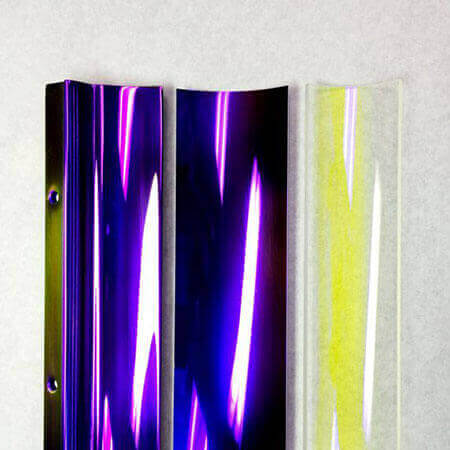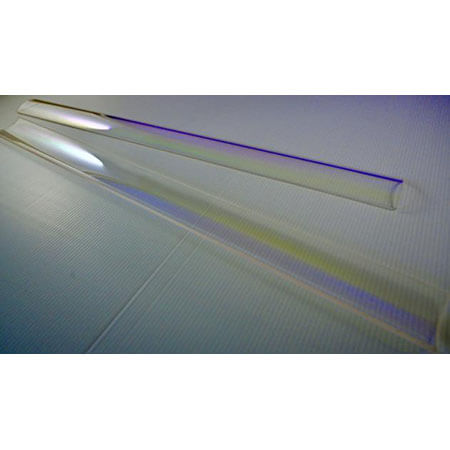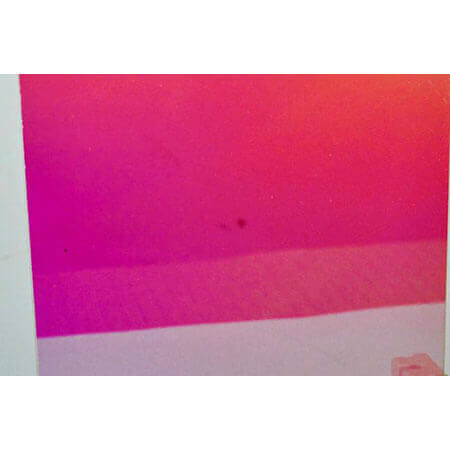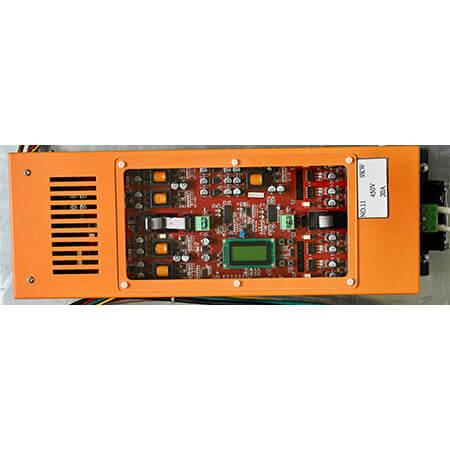UV Replacement parts are crucial for maintaining the efficiency and functionality of UV curing systems used in various industrial applications. These parts can range from bulbs and reflectors to filters and quartz plates, all designed to ensure optimal performance of UV curing equipment.
The use of UV Lamps is widespread across industries such as printing, automotive finishing, and electronics manufacturing. Regular replacement of these parts is essential to avoid downtime and maintain production quality.
The use of UV Lamps is widespread across industries such as printing, automotive finishing, and electronics manufacturing. Regular replacement of these parts is essential to avoid downtime and maintain production quality.
UV Replacement parts
Quartz cooling Tube
Technical Data
Quartz sleeves as water jacket (cooling tubes) for UV lamps can vary in size, diameter and configuration from system to system. Lamps are also manufactured utilizing different types of quartz to block or allow UV transmission in various spectral range.
Water Cooling tubes are mounted between the UV lamp and substrate in a UV curing system, to filter out infrared (IR) radiation and prevent the system and the substrate from overheating, whilst allowing the majority of UV radiation to pass through. They are kept cool with the addition of air or water being pumped through on a system that passes through a chiller.
Cooling tubes are various different sizes depending on the size and manufacturer of the system, and GCTC provide you with a wide range of lengths and diameters of cooling tube, manufactured to exact dimensions from high grade quartz.
GCTC keep the most in using quartz water jacket in stocks to offer the better service especially for PCB manufactured system which demanding customize dimensions and shapes to perfectly fitted into their systems.
UV Curved Dichroic Coating Reflectors/Cold Mirrors
GCTC’s aluminum and cold mirror reflectors are suitable for standard UV systems for which substrate to use is depending on the characteristics of the working piece; Cold-mirror reflectors are using for heat-sensitive materials as they absorb heat-producing infra-red energy and reflects only the UV energy.
UV Curved Quartz Dichroic Reflectors
UV cold mirrors reflect UV energy while removing heat-producing visible and infrared energy. The removal of visible and infrared energy can be accomplished by transmitting the visible and infrared energy through the reflecting optic (typically fused silica) or by absorbing the visible and infrared energy and transferring the absorbed heat to the reflecting optic (typically aluminum). UV cold mirrors are extremely effective at increasing the amount of reflected UV energy at the irradiation zone while simultaneously significantly reducing the visible and infrared energy. The result is lower temperatures at the irradiation zone, allowing the processing of temperature sensitive substrates.
Cold mirrors are useful in protecting temperature sensitive substrates. Uses include
Photo polymerization of inks, dyes and adhesives
Semiconductor manufacture
Printed circuit board manufacture
Product packaging
Flooring
Water sterilization
Imaging
Curved Cold Mirror (Reflector)
Dichroic film coating glass reflector
Spectral characteristics:
Reflecting avg. ≧92% for spectrum range at 220~400Nm
Transmission avg. ≧ 80% for spectrum range at 450~2000Nm
The reflectors we produce help reflect the ultraviolet curing energy and pass infrared wavelengths. This is achieved by reflecting visible light. Less infrared radiation means less heating of the illuminated object in the beam. Dichroic reflectors are used in compatible lamps to help the system dissipate heat and thereby extend the life of the lamp.
Hot Mirror/Quartz Plate
Technical Data
Tavg > 85%: 220-400nm
Tavg < 30%: 430-630nm
Tavg <= 87%: 700-2500nm
GCTC’s hot and cold mirrors are ideal for use in situations where heat could severely damage an experimental setup. The dichroic coating glass mirrors are available in various sizes. Our UV fused silica mirrors offer increased transmission and reflectance, a lower coefficient of thermal expansion.
The quartz plate is generally place between the lamp and the substrate. The plate does not absorb UV rays but enhance in reradiating the rays at a temperature lower than the working lamp. It is necessary to clean the plate regularly for better performance of the curing results. GCTC provide the products of the top-most quality.
A normal glass plate cannot withstand extreme temperatures as much as a quartz plate does. UV lamp helps in drying inks and graphic coatings. The main use of a quartz plate in the lamp is to prevent the accumulation of debris, dirt and contaminants from building in the filter.
The UV hot mirror is primarily placed to reduce the effect of infrared rays (IR) that may have an effect over the printing clarity. Along with dichroic reflectors, the hot mirrors improve UV energy and reduce infra-red energy that can cause a likely damage to certain substrates that are heat sensitive. By directing the IR energy to the filament, the hot mirror helps by giving you a better printing experience by providing you a reliable way of removing heat.
The replacement lamp is used to dry coatings and inks in signs and graphics and is an important component of the drying system. The UV curing lamp is a better option than infra-red drying as it resists smudges. The quartz plate protects lamps from debris and works as a filter between lamp and the curing system. The plate prevents dirt, grit and contaminants from building up.
Electric Power Supply
Electronic power supplies are used to provide a constant power to a UV system, independent of any fluctuation in the mains voltage. This provides protection to the UV lamps from power surges and ensures a consistent curing performance. Electronic power supplies provide reliable ignition to a range of lamp sizes and types.
An electronic power supply carries out the same function as traditional transformer or choke based power supplies, whilst generally being more power efficient, smaller in size and significantly lighter. They also provide an infinitely variable level of lamp power, as opposed to an incremental one, and can be easily incorporated into analogue or digital control systems.
The benefits of GCTC’s Lamp Driver’s reliability, high efficiency, and high power Factor, in combination with step-less dimming.
The wide input voltage range and constant power regulation of GCTC’s lamp driver in combination with the integrated communication intelligence will assure you the optimal UV output during lamp life.
Extensive field experience with a large number of GCTC’s Lamp Drivers with Medium Pressure lamps have demonstrated and proven high product reliability and increasing lamp life.
UV Meter
Technical Data
Display : 6-digit LCD display, 0~999999mJ/cm2
Measuring range: 0-5000mW/cm²
Dimensions: 80W*145L*12T(mm)
Weight: 500g
Operating temperature: 0-50℃
Measuring spectral range: 250-410Nm
Casing: Aluminum chrome with stainless steel cover.
The visible light is only a small part of the electromagnetic radiation, the short-wave still visible light appears to us to be violet. When the wave-lengths are even shorter then we cannot see the radiation anymore, we are then within the range of the ultraviolet radiation approx. 254-380Nm. There are different UV rays: UV-A 318-380Nm UV-B 280-315Nm UV-C 254-280Nm
UV-Integrator I is intended for measuring the UV capacity of exposure installations. A measuring head is located at the area of the unit records UV emission in the spectrum range between 250~410Nm. The measurement can be ready directly on the LCD in mJ/cm², the I type is operated with a 3.6V lithium battery located inside the unit. By using special energy-saving circuits the battery will last for approx. 10000 hours and special filter glasses absorb the visible as well as the infrared range of emission s that measuring is only done in the spectral range required.
Choosing the correct
Compatibility: Ensure the parts are compatible with your specific UV curing system.
Quality: Opt for high-quality parts that promise durability and longevity.
Certification: Check for industry certifications that guarantee part performance and safety.
The UV Lamps market is seeing innovations such as the introduction of more durable and efficient parts, which are driving the demand in sectors that rely heavily on UV curing technologies. Enhanced UV lamps and improved material compositions for filters and reflectors are examples of these advancements.
The manufacturing of UV Lamps is a precise process that involves the latest in material science and technology engineering. Manufacturers and suppliers are continuously working on improving the efficiency and environmental impact of these parts, ensuring they meet the stringent industry standards.
UV Replacement parts
involves several key considerations:Compatibility: Ensure the parts are compatible with your specific UV curing system.
Quality: Opt for high-quality parts that promise durability and longevity.
Certification: Check for industry certifications that guarantee part performance and safety.
The UV Lamps market is seeing innovations such as the introduction of more durable and efficient parts, which are driving the demand in sectors that rely heavily on UV curing technologies. Enhanced UV lamps and improved material compositions for filters and reflectors are examples of these advancements.
The manufacturing of UV Lamps is a precise process that involves the latest in material science and technology engineering. Manufacturers and suppliers are continuously working on improving the efficiency and environmental impact of these parts, ensuring they meet the stringent industry standards.
 English
English Français
Français Deutsch
Deutsch Русский
Русский Português
Português Italiano
Italiano हिन्दी
हिन्दी Español
Español Nederlandse
Nederlandse العربية
العربية Tiếng Việt
Tiếng Việt ภาษาไทย
ภาษาไทย Bahasa Indonesia
Bahasa Indonesia বাঙ্গালী
বাঙ্গালী Türk
Türk 繁體中文
繁體中文





